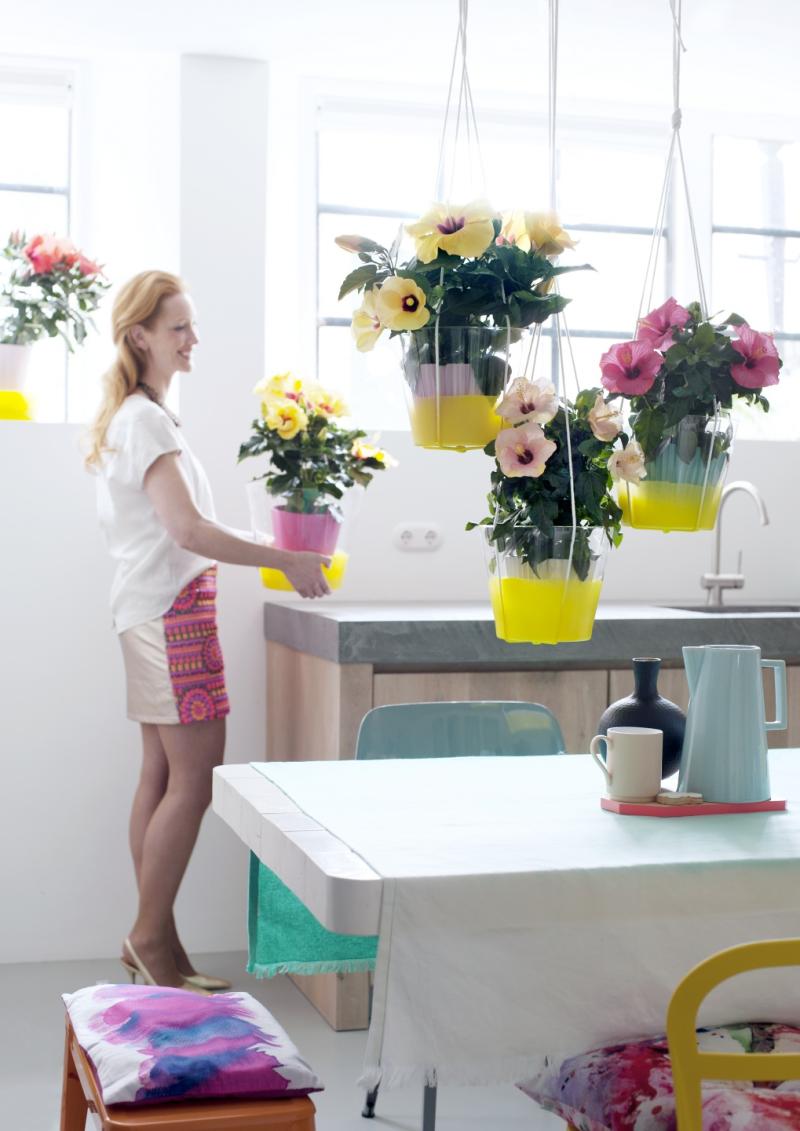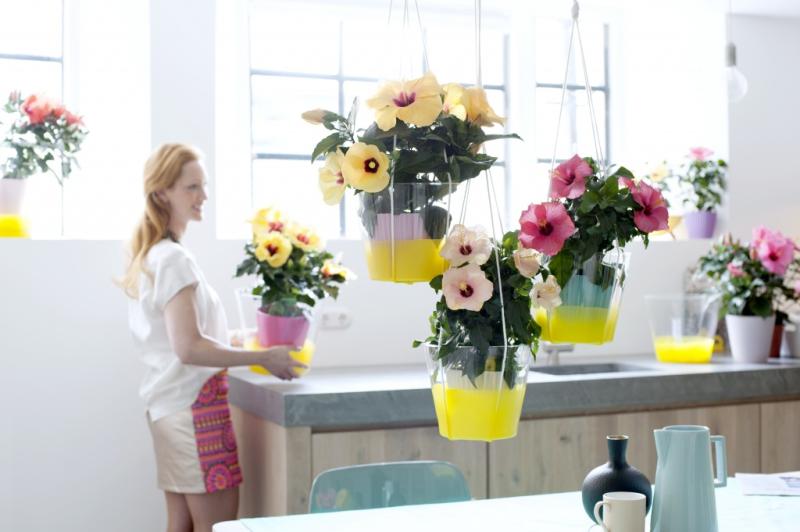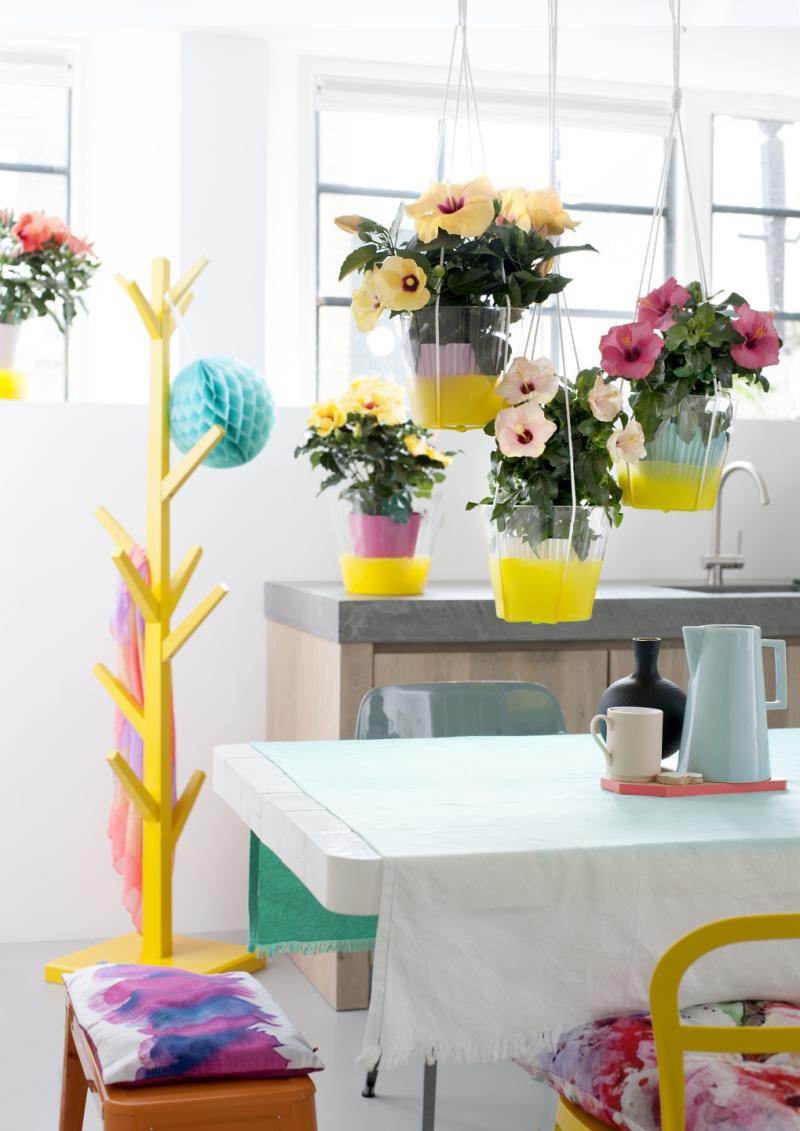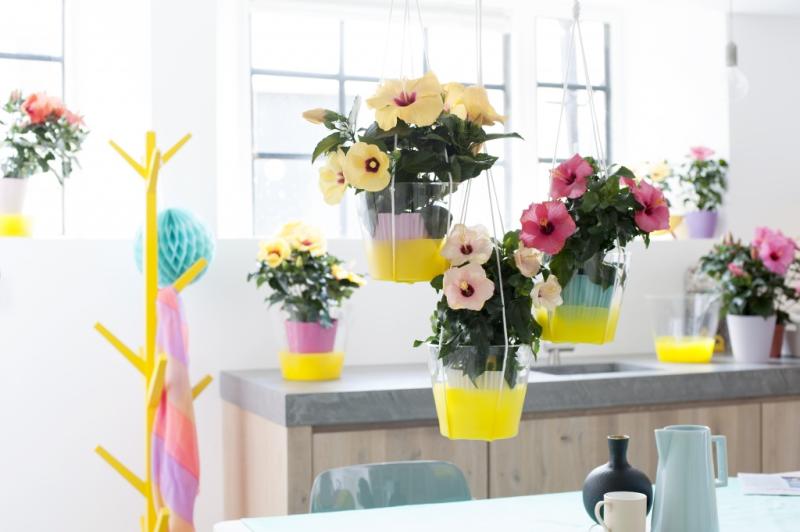May 2015: The Hibiscus is the Houseplant of the month
Let your customers know that the Hibiscus is Houseplant of the month of May 2015, by placing it in the spotlight this month. You can download accompanying, free POS material underneath
The story of the Hibiscus
You can recognize the versatile Hibiscus by its trumpet shaped flowers and shiny, dark green leaves. It is used as a houseplant as well as a container and patio plant. The original flower colour was pinky-red but nowadays we see it in many different colours, from yellow to dark red and from pink to white.
Hibiscus production
The Hibiscus originates from China and South East Asia and belongs to the Malvaceae family, also known as the Mallow family. What is striking about this plant is the length of the stamen stalk which protrudes from the flower and ends with the anthers.
What do you need to look out for when purchasing the Hibiscus?
• Pot size and plant shape. When purchasing Hibiscus it is especially important to check the pot size, from mini to large containers. You also need to check the diameter of the plant, number of buds and the shape: bush or standard.
• Health. The plants need to be free of pests and diseases.
• Bud forming. The flowers bloom for a relatively short time but the plant produces new buds regularly. It is therefore important that there are enough new buds on the plant.
• Aphids. Watch out for yellow leaves or aphids on the Hibiscus.
• Maturity. Make sure the plants are mature enough when you buy them. If the plant doesn’t get enough light the buds won’t open or they will easily drop off.
• Moisture. It is also important that the Hibiscus is moist enough when you buy it, so that it won’t wilt.
Hibiscus range
The range of Hibiscus available has been considerably extended. The range used to be sensitive to buds dropping but this problem has been generally eradicated through breeding. The best known varieties are plants from the Sunny Cities Series, where the cultivars are named after world cities such as Paramaribo, Bordeaux or Venice. New to the range is the HibisQs which has a longer bud development and (a) considerably longer flowering time than average. There are three distinctive ranges: Longiflora, Miltiflora and Gardiflora.
Care tips for consumers
The Hibiscus likes a lot of light and can even be outdoors in the full sun. Keep the soil damp enough, especially in the flowering season. If the leaves wilt, then the houseplant is thirsty. Give the houseplant plant food every two weeks and regularly remove dead flowers. In the winter the plant can be placed in a cool, but frost free position and it can be pruned, so that it will flower abundantly again in the following season.
Creative tips for the Hibiscus
With its beautiful colours the Hibiscus looks great in interiors as well as gardens. You can combine the houseplant with either trendy or classic pots. The plant creates an instant holiday atmosphere outdoors, either as a standard or a shrub. You can create a perfect summer patio, together with other Mediterranean plants such as the Bougainvillea, Oleander and Olive.




